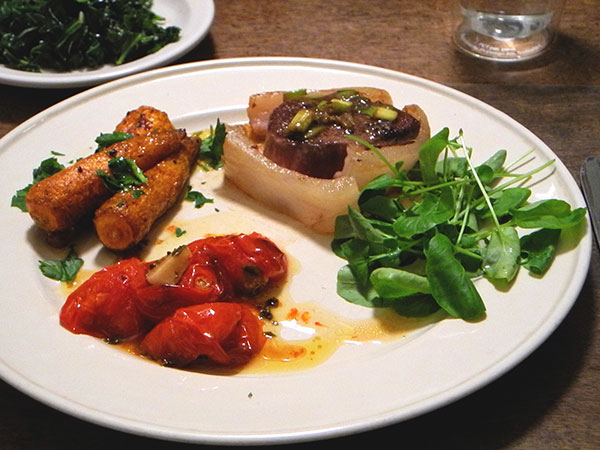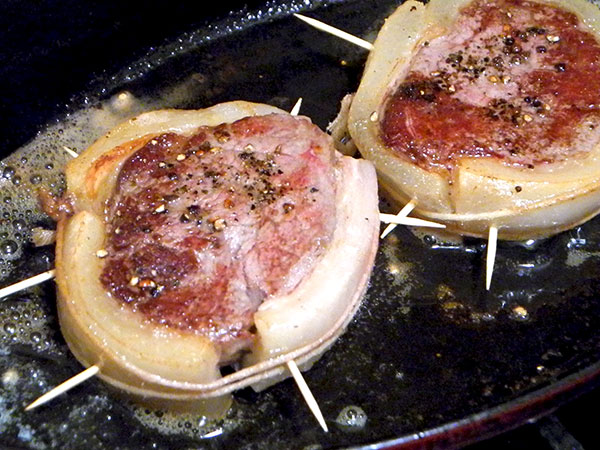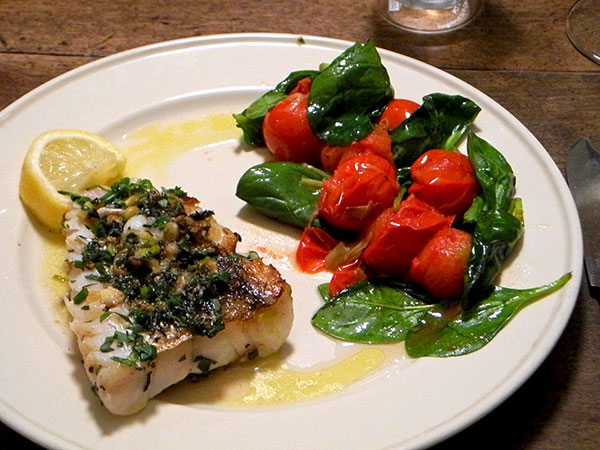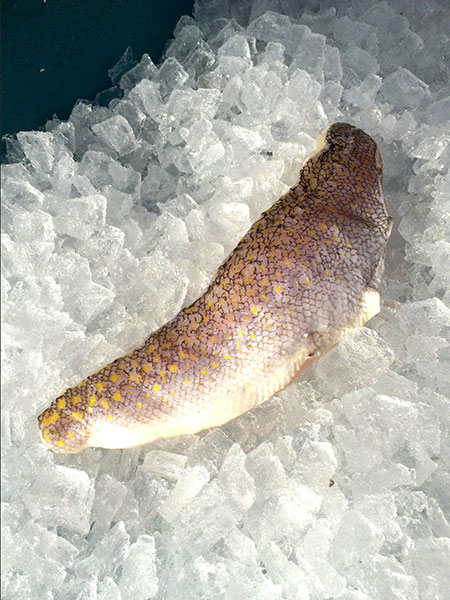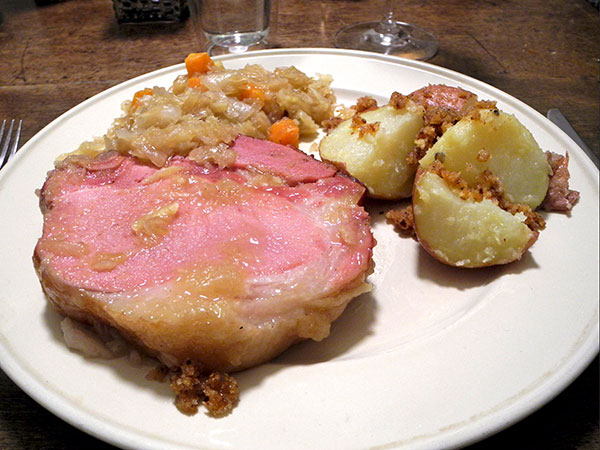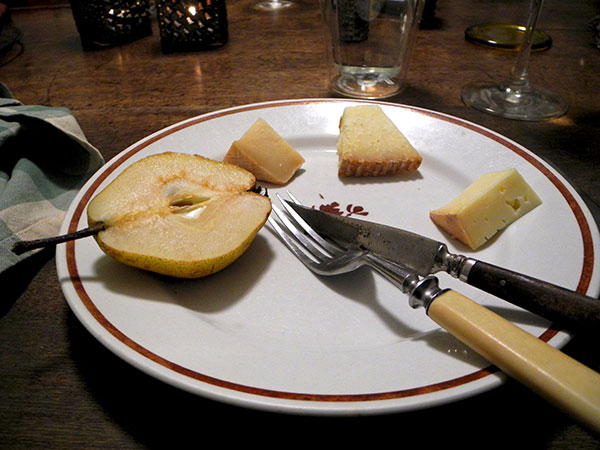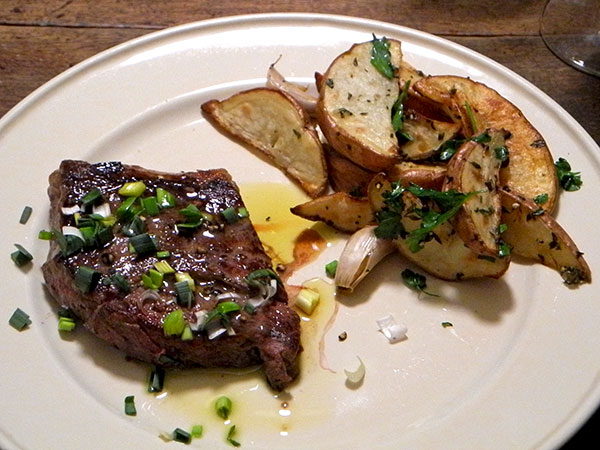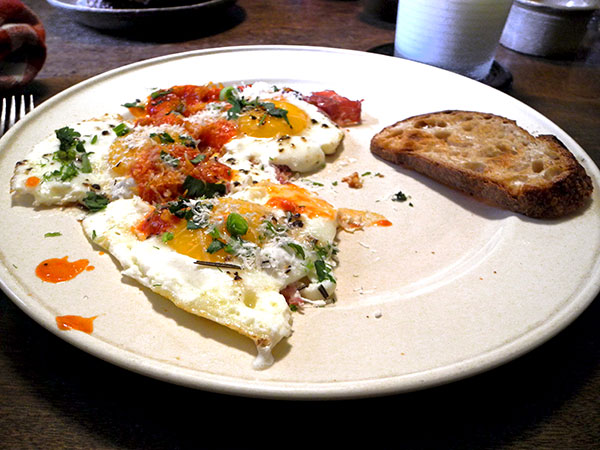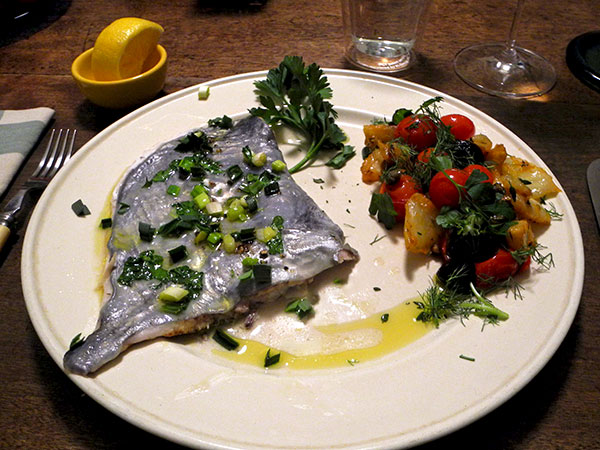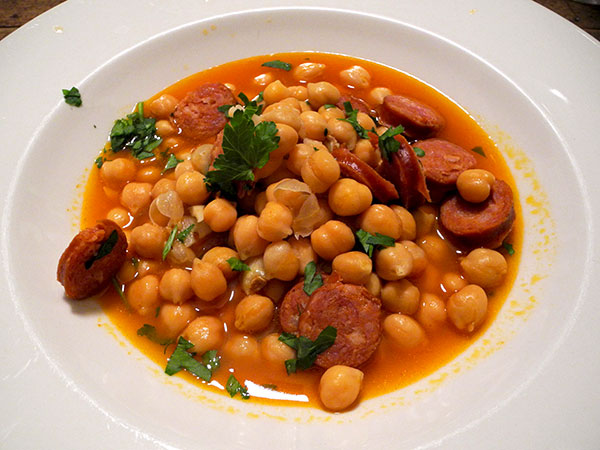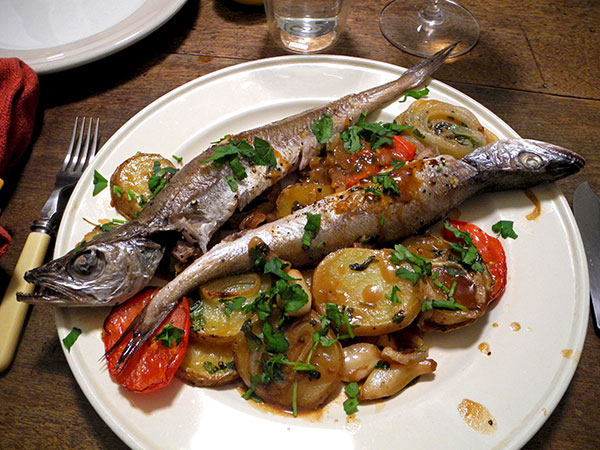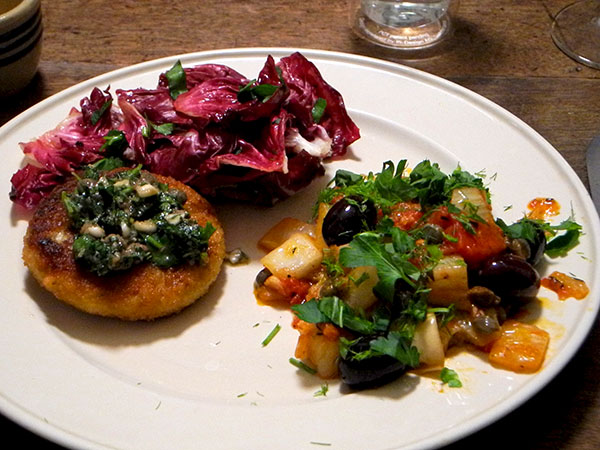Note to self: You have permission to reproduce this meal any time you want to.
I was once on fairly intimate terms with Julia child (I mean the books, not Julia herself, or even her TV show, because I lived in Providence and Newport, not Boston, and I didn’t watch much television of any kind, and I certainly wasn’t about to do so in the 70s). I did prize her first two books however, and I still have them, the spine of the older one lovingly repaired with white duct tape. Among my campaign medals I count the fact that I had managed to bring to the table each of her three variations on the French preparation of tournedos, some more than once.
Okay, I confess that like everyone else in the country almost half a century back, I actually did watch some of ‘The French Chef’. The picture below is my favorite Julia image.
(I never get this kind of help)
Until this week I hadn’t really thought of tournedos since the 1970s, and I probably would not have found myself there tonight, except for the fact that I had almost tripped over a pair of five-ounce filets at the Millport Dairy stall earlier this week. Everything I’ve purchased from John has been exceptionally good; I expected nothing less of his beef, and the two vacuum packages looked like they might have been made for me/us.
I had no mushrooms, no artichoke hearts, and no foie gras or truffles on hand, so I went with a slight modification of Julia’s basic steak au poivre, which she allows as an alternative to the more elaborate preparations. It was delicious. The steaks were of the classic size, about 2 1/2 inches in diameter, and about an inch thick,. They looked much more impressive once I had encircled their extraordinary leaness in pork fat, but that took some doing. Just as I was about to perform the operation I noticed for the first time that the Niman Ranch fat I had chosen to use was salt pork, which wouldn’t do at all. I scurried about a bit and succeeded in boiling the pork strips, neutralizing most of the salt, but then I found the segments weren’t going to cooperate in encircling the filets. I pulled out my jar of toothpicks and, with the help of good kitchen twine, finally succeeded in taming the now not-so-salty pork. My tournedos now looked like mines, but they were going to keep their shape and retain their juices.
- two perfectly-sized filet steaks, or tournedos, wrapped in parboiled strips of Niman Ranch salt pork, dried, pressed with crushed peppercorns and allowed to rest for about 45 minutes before sautéed in a mixture of butter and olive oil, for about 3-4 minutes each side, removed, seasoned with salt (with a very light hand, considering their jackets) and kept warm, the butter, oil and accumulated meat fat then removed from the pan, sliced fresh garlic and baby leeks from Rogowski Farm added, along with a little butter, and stirred for a minute, a little beef stock introduced and boiled down until thickened, while scraping up coagulated cooking juices, followed by a few tablespoons of cognac, boiled until its alcohol evaporated, and finally, off heat, two tablespoons of butter swirled into the sauce about half a tablespoon at a time before it was poured over the filets
- Maine cherry ‘cocktail’ tomatoes from Whole Foods, slow-roasted with olive oil, dried Italian oregano, and quartered Rocambole garlic from Keith’s Farm
- Upland Cress from Two Guys from Woodbridge
- orange carrots from Keith’s Farm, rolled in olive oil, salt, and pepper, roasted at 400º for about half an hour, removed from the oven and sprinkled with chopped parsley from Whole Foods
- kale from Rogowski Farm, wilted with olive oil in which thinly-sliced Rocambole garlic from Keith’s Farm had been heated, then seasoned with salt and pepper, and drizzled with more olive oil
- the wine was a French Bordeaux, Château Tour Caillet 2012
- the music was that of the handsome Ferdinand Ries, his Piano Concerto No. 3
Ferdinand Ries (1784-1838)
[the Julia Child image is from Wine Curmudgeon; the very hot image of Ferdinand Ries is from Wikipedia – Die freie Enzyklopädie]
